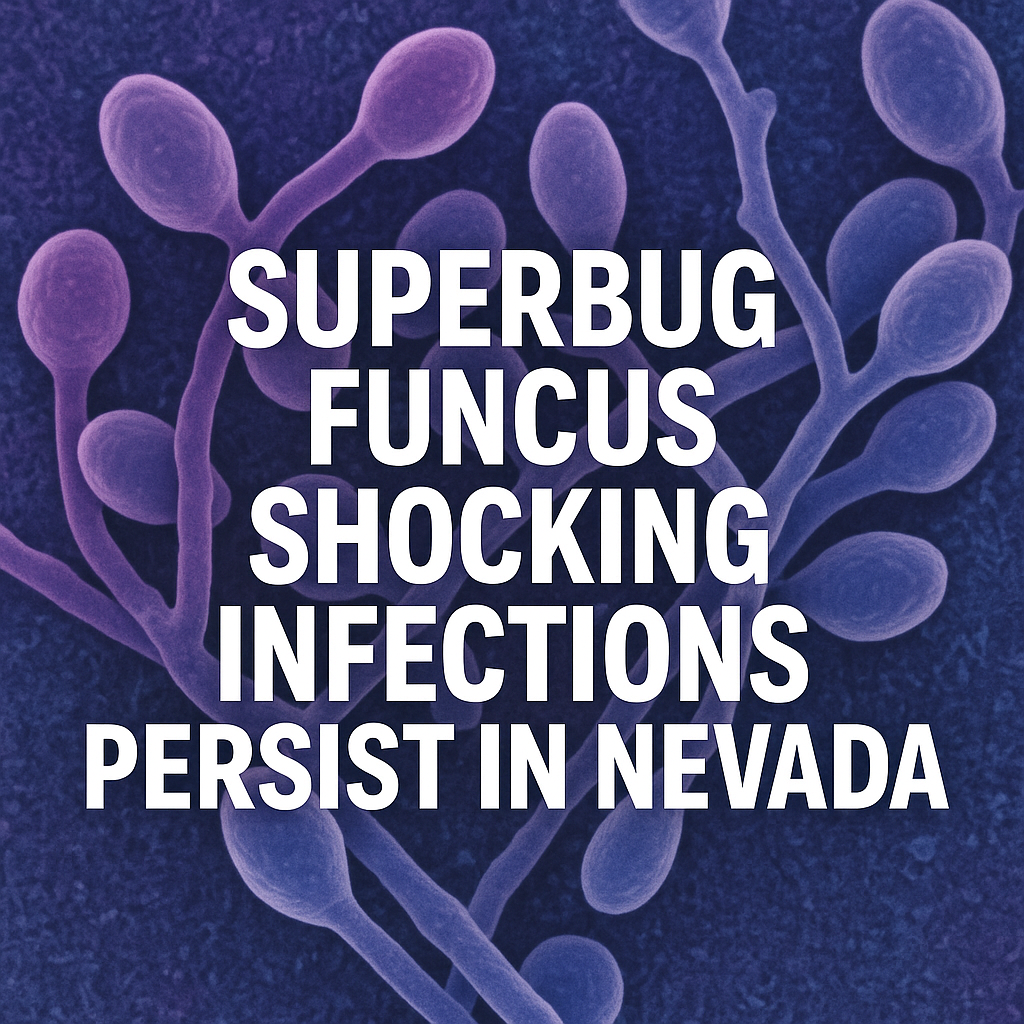Superbug Fungus: Shocking Infections Persist in Nevada
Superbug Fungus: Shocking Infections Persist in Nevada
Superbug fungus infections are becoming increasingly prevalent and alarming, especially in Nevada. Recent reports reveal that the state is experiencing a troubling uptick in cases linked to drug-resistant fungi, raising concerns among health officials and the general public alike. This article delves into the complexities of this issue, synthesizing viewpoints from diverse news sources to give a balanced perspective.
Understanding the Superbug Fungus

The term “superbug” refers to microorganisms, including fungi, that have developed resistance to conventional treatments, rendering standard therapies ineffective. Among these, the Candida auris fungus has emerged as a significant health threat worldwide. Initially identified in Japan in 2009, this resilient strain of yeast has since spread globally, affecting thousands and becoming an urgent health concern.
In Nevada, the persistence of healthcare-associated infections (HAIs), partly driven by these superbugs, has alarmed medical professionals. According to a recent report by 8 News Now, hospitals in the state are struggling to manage outbreaks caused by drug-resistant fungi. The ongoing situation has prompted the Nevada Department of Health and Human Services to issue warnings, calling for increased vigilance in infection control protocols.
The Current Landscape of Infections in Nevada
Data indicate a concerning trend in the number of infections linked to superbug fungi in Nevada. The state has witnessed a notable increase in cases associated with Candida auris, which poses unique challenges due to its resilience and the difficulty of diagnosing infections correctly. Healthcare facilities are finding it challenging to contain these outbreaks, which can lead to severe complications, especially among vulnerable populations.
A report from the Review-Journal highlights that local hospitals are taking significant measures to combat the spread, including enhanced sanitation protocols and educating staff about recognizing symptoms. However, healthcare professionals are divided on the effectiveness of current strategies. Some argue that while immediate actions are necessary, without systemic changes in healthcare practices, recurrent outbreaks are inevitable.
Diverse Responses and Opinions
The contrasting perspectives on how to address the superbug crisis in Nevada reflect a broader national dilemma. On one side, some healthcare experts stress the need for aggressive infection control measures, advocating for the immediate implementation of more stringent regulations and thorough staff training. A public statement from medical professionals indicates an urgent call for “robust measures at all levels of healthcare” to mitigate risks.
Conversely, a faction of health specialists expresses skepticism regarding the feasibility of such stringent interventions in the state’s already burdened healthcare system. They argue that more research is needed to understand the factors contributing to the rise in infections. They emphasize the importance of improving overall patient care and fostering public awareness about the threats posed by superbugs.
Challenges Ahead
One of the fundamental challenges in addressing the superbug threat in Nevada is related to public awareness and perception. Many individuals may not be fully aware of the threat posed by superbugs and the significance of HAIs. Education campaigns are crucial to alert the populace to take preventative measures, such as practicing good hygiene, particularly in healthcare settings.
Moreover, the healthcare system itself is under pressure from a combination of staffing shortages, rising operational costs, and a lack of funding for advanced research on infectious diseases. Consequently, the overarching question remains: how can Nevada effectively combat the rise of superbug fungi while maintaining a functioning healthcare system?
Moving Forward: A Balanced Approach
In synthesizing these insights, it becomes clear that any effective strategy must encompass a multi-dimensional approach. Enhancing public education, investing in research, and fostering a collaborative environment between healthcare professionals and patients are crucial for mitigating the impact of superbug fungi.
Officials must weigh the urgency of the situation against the practical considerations of implementing new strategies. The need for a balanced, fair approach cannot be overstated; one that acknowledges the complexity of healthcare dynamics and strives for equitable solutions.
In conclusion, the ongoing situation with superbug fungus infections in Nevada sheds light on a pressing health crisis that calls for immediate action and thoughtful consideration. As the state grapples with these challenges, the integration of diverse perspectives and proactive measures will be key in curbing the spread of these resistant pathogens. The task ahead is daunting, but a commitment to comprehensive action offers hope for better infection control and public health outcomes in the future.






